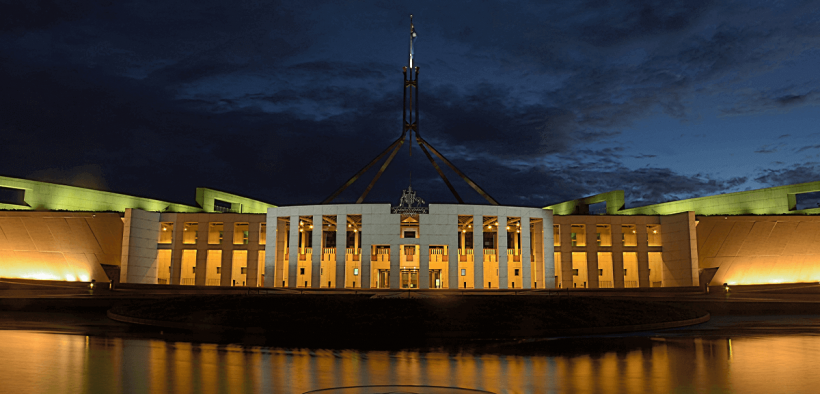The Australian Government has released the 2022-23 Federal Budget that will help the country weather its biggest economic shock by focusing on the cost of living, jobs and national security.
The economy has rebounded strongly as the labour market shows huge progress since the pandemic. This, along with higher near-term commodity prices, has driven large upward revisions to tax receipts and reductions in unemployment benefit payments.
Having achieved the objective of low unemployment, the Australian Government is now transitioning to the second stage of its economic and fiscal strategy by setting a course to reduce debt over the medium term.
Safer Australia
In response to the recent floods, the Australian Government is providing more than $6 billion for disaster relief and recovery to flood-affected communities and $1.3 billion to implement recommendations of the Royal Commission on National Natural Disaster Arrangements.
$1.2 billion will also be funded for enhancing space capability and developing Australian-made satellites to provide critical data for emergency responders in times of natural disaster, support more reliable weather forecasting and help farmers better manage land and water resources.
$6.0 billion has also been added to the country’s COVID‑19 health response in preparation for winter and new variants.
The Budget also shows the Australian Government’s actions to improve national security with the $575 billion investment for the nation’s Defence Force and $270 billion for defence capability.
The Australian Government is also building resilience at home by growing and building a sovereign defence industry base and the capacity needed to maintain them.
$9.9 billion is invested in intelligence and cyber capabilities to bolster the commitment to Australia’s Five Eyes and AUKUS trilateral partners while supporting a secure Indo-Pacific region.
The 2022-23 Federal Budget will also see further funding in protecting the community with $19.8 to establish a national convicted terrorist register and $170.4 million to equip law enforcement and security agencies with the tools to thwart transnational, serious and organised crime.
Cost of living
The Australian Government is helping Aussies deal with cost-of-living pressures with a one-off $420 cost of living tax offset, allowing eligible earners to receive up to $1,500 to $3,000.
Aside from this, the Budget also provides a one‑off, income tax-exempt payment of $250 to all eligible pensioners, welfare recipients, veterans and eligible concession cardholders.
The Australian Government is also taking temporary action to cut fuel excise by 50 per cent for six months and will provide $10.3 billion to make child care more affordable for families.
The Home Guarantee Scheme will be expanded and the First Home Super Saver Scheme will be provided to help more Aussies achieve their aspirations of owning a home.
Electricity bills will also be lowered as $84 million is invested into deploying microgrids along with already established clean and renewable energy sources.
Permanent tax relief will also be provided to Aussies through the legislated Personal Income Tax Plan. In this Plan, around $16 billion in permanent tax relief will help relieve the rising cost of living pressures.
Regions
Under the Budget, the Australian Government is investing over $21 billion in regional infrastructure and essential services to unlock opportunities across Australian regions and communities.
This will include $2 billion for a Regional Accelerator Program, which will create jobs across regional Australia, and an additional $17.9 billion for infrastructure projects to improve connections between regions and major metropolitan centres.
The Australian Government is also providing $7.4 billion for new and expanded dam projects that will increase water security, build drought resilience for the future and promote regional economic development.
Meanwhile, $1.3 billion will be provided for improved telecommunications across regional and remote communities. This includes a $480 million upgrade to the NBN Fixed Wireless and Satellite networks and a new $811.8 million Connecting Regional Australia initiative.
Workforce
With over 1.9 million Aussies at work, the Budget has provided new measures to expand and upskill the workforce into more highly skilled and better-paying jobs.
The Budget shows a further $2.8 billion investment in supporting Australian apprenticeships, building on the $13.3 billion spent on apprenticeships and traineeships since 2013. It also introduces a new streamlined Australian Apprenticeships Incentive System, which will provide support to employers and apprentices.
The Australian Government will also be investing in its Modern Manufacturing Strategy, bringing in over $1 billion in funding to transform the regional manufacturing sector and strengthen supply chains.
The Budget will also see to the Deregulation Agenda, which will implement deregulation benefits and over $21 billion in tax cuts to small local businesses.
$1.0 billion via the Technology Investment Boost will be provided to encourage small businesses to go digital. Aside from this, small businesses will also have access to a new 20 per cent bonus deduction for eligible external training courses for upskilling employees under the Skills and Training Boost.
Women
With the Australian Government committed to providing lives and livelihoods for Australian women and children, a record $1.3 billion for ending all forms of violence against women and children has been provided under this Budget.
This investment will support the implementation of the new National Plan to End Violence against Women and Children 2022‑2032, which is being finalised with states and territories following 18 months of consultation.
Aside from this, funding will also be provided to support measures across key priority areas, such as support for the establishment of the new Family, Domestic and Sexual Violence Commission.
The package also continues the Government’s implementation of the recommendations of the Respect@Work report, with $3.4 million to address workplace sexual harassment.
Meanwhile, a further $330.6 million is given to improve health outcomes for women and girls across priority areas such as maternal, sexual and reproductive health.
With women’s workforce participation at a record high, $482.0 million is provided to help women advance their careers and improve their economic security.
To support more women in senior roles and leadership positions, additional funding of $40.4 million is provided for a range of initiatives such as expanding the Future Women’s Jobs Academy to provide mentoring support and skills training to help women to transition into management and leadership positions.
Essentials
Under the 2022-23 Federal Budget, Australia’s healthcare system will see many improvements. Medicare will not only be updated to include new services but will also see to having Telehealth for easy access to high-quality care.
The Australian Government will also be launching the Pharmaceutical Benefits Scheme (PBS), reducing the concessional and general PBS Safety Net thresholds for affordable access to medicines.
A $2.4 billion funding for over four years for new and amended listings will also reduce out‑of‑pocket costs. This includes treatments for cystic fibrosis, spinal muscular atrophy and bowel cancer.
The Australian Government will also transform the mental health sector and the aged care sector, with the latter receiving $468.3 million in support for comprehensive aged care reforms and additional services.
The Budget will also see an additional $225.8 million to improve the educational outcomes of school students, particularly for those who are disadvantaged. This will ensure that all students are equipped with the necessary skills as part of the plan for a stronger future.
The NDIS will also receive guaranteed funding that will allow them to provide $33.9 billion to over 500,000 Australians who have permanent and significant disabilities.
Eliza is a content producer and editor at Public Spectrum. She is an experienced writer on topics related to the government and to the public, as well as stories that uplift and improve the community.






















































